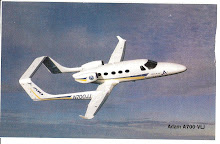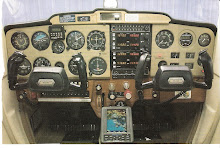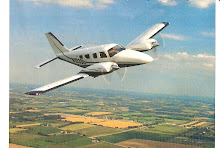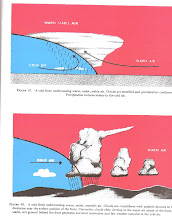Altimeter settings is a subject usually not discussed in any great detail and one has to put altimeter errors and atmospheric temperature and pressure standards together to get the true picture of why we have to keep resetting the altimeter as we fly.
Let's look at it this way: The standard temperature at sea level (s.l.) is 59 degrees Farenheit (F.) and the temperature decreases with altitude at a gradient of 3.6 degrees/1000 feet (ft).
So as we gain altitude we have to apply a temperature correction.
The atmospheric pressure also decreases with altitude (roughly 1 inch Hg/1,000 ft) and is subject to high or low pressure areas that travel across our continents.
Since the accuracy of airplane altimeters is subject to changes in temperature and pressure, static pressure systems and instrument errors, a set of procedures must be used to maintain conformity of altitude for all airplanes in flight.
Above 18,000 ft. - A standard altimeter setting of 29.92 in. of Hg is used by all.
Below 18,000 ft. - When the barometric pressure is 31 in. Hg or less, the altimeter shall be set in accordance with a station along the route of flight, within 100 nautical miles of the aircraft.
VFR Flight - The pilot must set his altimeter at departure (the station) and en route (stations).
IFR Flight - FAA traffic Controllers will furnish the pilot with a current setting at least once while the aircraft is in the Controller's area of jurisdiction.
No Radio Flight - Set the altimeter at the departure airport.
Altimeter instrument Error - Any scale error should be detected by the pilot when he climbs into the cockpit: Then,
1. Set the current reported altimeter setting (airport).
2. The altimeter should now indicate the field elevation in altitude.
3. If not, note the variation from the known elevation. If the variation is plus or minus 75
feet, the accuracy of the altimeter is questionable.
In flight, obtain frequent current altimeter settings along your route because the weather keeps changing (Temp. and Press.) as you fly.
Flying from a high pressure area to a low pressure area - your airplane will be lower to the surface than your altimeter indicates.
Flying from a low pressure area to a high pressure area - your airplane will be higher above the surface than your altimeter indicates.
In any case, reset your altimeter to the setting given by the Tower before you land. Usually the ATIS has the current setting. What is ATIS? ATIS is an automatic terminal information service available to pilots on arrival at their destination, giving the pilot pertinent advisories such as altimeter setting, runway in use, current weather, etc.
We'll take up ATIS later as a subject for discussion. RS.
Tuesday, May 8, 2007
Subscribe to:
Post Comments (Atom)











No comments:
Post a Comment